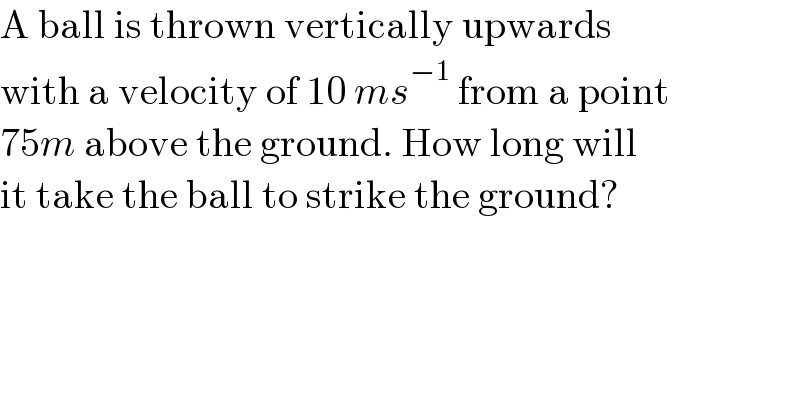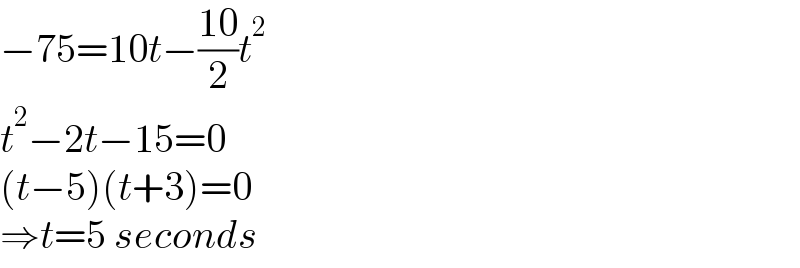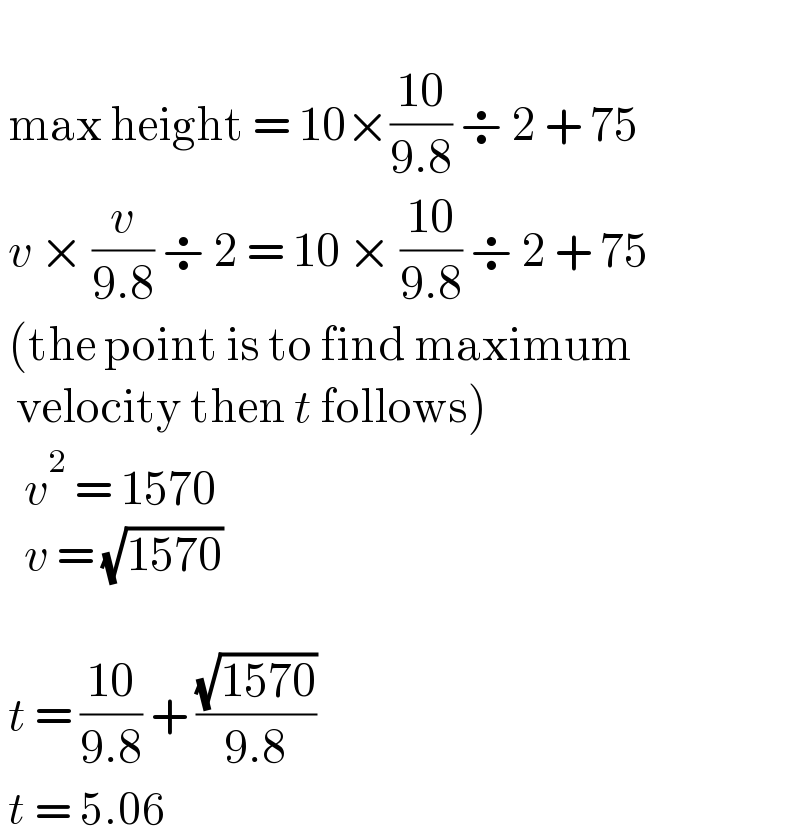
Question and Answers Forum
Question Number 153041 by nadovic last updated on 04/Sep/21

Answered by mr W last updated on 04/Sep/21

Commented by nadovic last updated on 05/Sep/21

Answered by physicstutes last updated on 04/Sep/21
![Using the kinematic equation y = y_0 + v_0 t+(1/2)gt^2 ⇒ y = 75 + 10t−((10)/2)t^2 [assuming g =10 m/s^2 ] when it reaches the ground, y=0 ⇒ 5t^2 −10t−75=0 ⇒ t^2 −2t−15=0 ⇒ (t−5)(t+3)=0 t=5 seconds since t>0](Q153048.png)
Commented by nadovic last updated on 05/Sep/21

Answered by talminator2856791 last updated on 04/Sep/21

